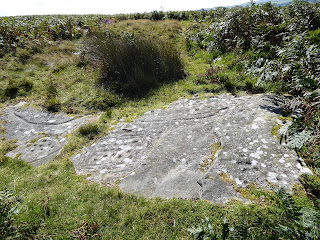You know how sometimes you're out plant-hunting and you think you've found a rare plant? But 99 times out of a hundred it turns out to be something less amazing that's maybe looking a bit unusual? Read on to find out why it's always worth taking a closer look...
 |
| The mystery umbellifer in flower Image: P. Stroh |
First BSBI member Ian (mainly a birder but also a pretty good botanist) sets the scene:
"In late June this year I was contacted by a council Planning
& Countryside Officer, who asked me to look at an umbellifer that one of
his volunteers had found at a site where the council had undertaken some work
to create a wild flower meadow. Much of the area had been flooded over winter
and was still damp/marshy in places.
"I had a look at the site a few days later and easily found
the umbellifer which was frequent across the site and was certainly intriguing!
It seemed to key out to and to best fit the description for Creeping Marshwort
Helosciadium repens but, as that species is currently known from just one
native site in Oxfordshire, logically it couldn’t possibly be that, could it?
Moreover, some of the measurements were marginal and therefore it seemed more
plausible that the plant would be some sort of hybrid. Following some
consultation with others (who only saw photos) I reported back to the Council
Officer that this seemed most likely, possibly even a cross genera hybrid
between Berula and Apium/Helosciadium, which would be interesting in itself. However,
the plants were at an early growth stage, and I determined to come back at a
later date.
 |
| The mystery umbellifer in fruit and with 3-7 bracts below the flower: a mystery no more? Image: P. Stroh |
"A few measurements still seemed marginal, however, and given
its rarity I still couldn’t believe that the plant would really turn out to be
H. repens. I posted some pictures on Twitter to obtain some more opinions, without
mentioning a possible ID. This prompted a quick and excited response with a
number of Twitter experts suggesting it looked good for H. repens, and I
subsequently contacted Pete Stroh, BSBI's England Officer who alerted Fred Rumsey at the Natural History Museum. After
seeing the photos, both Fred and Pete came to see the plant in situ the
following day".
Pete takes up the story…..
"After meeting up with Ian, we strolled down to the site. Creeping Marshwort has a very distinctive ‘sickly green’ look to the leaves, and so my hopes were raised when we started looking around at the locally abundant, very neat-looking umbellifer. Several times over the years I’ve been excited about a possible find of this nationally rare species, only to find out after closer examination that it was the stunted growth form of Fool’s Watercress, an apt name all things considered.
 |
| The damp meadow, with Creeping Marshwort frequent across the site Image: P Stroh |
"Wandering around, it was clear the plant was everywhere, and almost certainly must have arisen from the seed bank. It’s a quite amazing find, and credit must be given to the sharp-eyed volunteer who alerted Mark Webster, the Countryside & Planning Officer for Thetford Town Council. Mark organised the removal of topsoil for the specific purpose of seeing what would appear, wild flower meadow creation without resorting to imported seeds – how very refreshing!
"Now the task will be to ensure that the species persists, although given the enthusiasm of Mark, the fact that that the seeds are clearly very long-lived in the soil, and that hundreds of plants were in fruit, all the signs are that with a bit of disturbance now and again, and a few tweaks with mowing regimes, this second extant native site for Creeping Marshwort will remain the best example of wild flower meadow creation I have seen".
So a new dot has now appeared on the BSBI distribution map for Creeping Marshwort and it looks as though the next step will be for Pete to update the Species Account for this rare plant.





